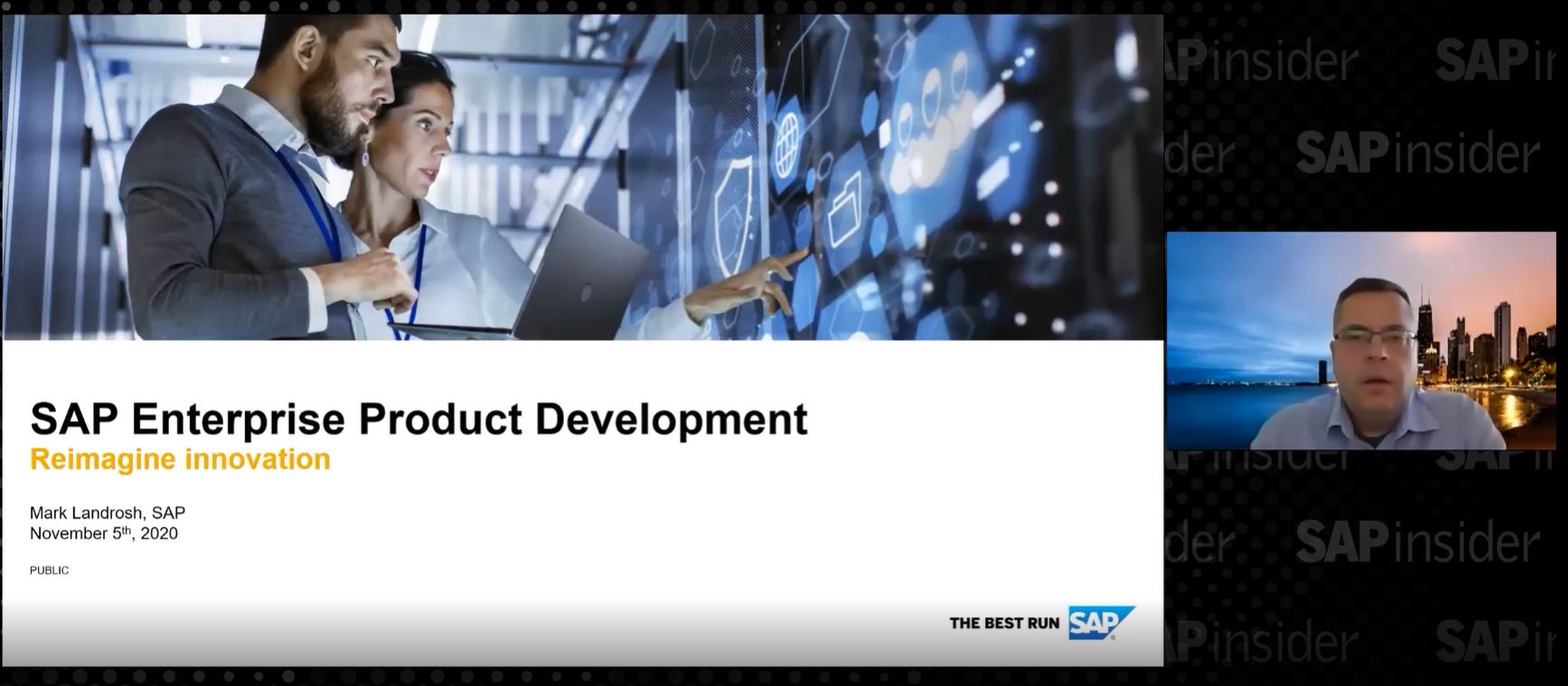Uncovering Your Superpower as a Woman in the SAP World
Meet the Authors
Key Takeaways
⇨ In a first ever for the event, the Empowering Women in Supply Chain Breakfast brought together professionals from various stages of their careers for a morning of insights and networking.
⇨ The breakfast session featured keynote speaker Darcy MacClaren, Global Head of Digital Supply Chain at SAP
⇨ MacClaren emphasised that digital transformation strategy should deliver the business "to be" future state not the “as is”
“Superpower” is not about seeking the world’s next Wonder Woman. Rather, it is the key to career success in supply chain as outlined by Darcy MacClaren, Global Head of Digital Supply Chain at SAP at the Empowering Women in Supply Chain Breakfast session held at this year’s Mastering SAP EAM + Supply Chain & Procurement Event.
In a first ever for the event, the Empowering Women in Supply Chain Breakfast brought together professionals from various stages of their careers for a morning of insights and networking.
The breakfast session featured keynote speaker Darcy MacClaren interviewed on stage by Annette Slunjski, CEO of Mastering SAP.
The breakfast kicked off with a networking session based on experience level with a majority of attendees being relatively new to the SAP world – indicating a encouraging influx of women to the SAP world.
MacClaren is notable in the SAP world with over 10 years of direct SAP experience and 30 years working in supply chain technology transformation. The founder of the Empowering Women in Supply Chain Network, MacClaren shared her journey and perspective, underlining the critical role of visibility in the supply chain industry.
Indeed, according to MacClaren, Covid actually was part of boosting the visibility of the importance of supply chain.
“Personally, I went from the person at a cocktail party with an uninteresting job to everybody wanting to know what the issue was with toilet paper – and that made supply chain so interesting to everyone. In business that demand to better understand supply chain was even more intense,” noted MacClaren.
“All of a sudden, heads of companies and heads of state were interested. Very talented early-stage employees wanted to get involved in the supply chain – all of a sudden, supply chain was cool!”
Part of modern supply chain management is connecting the organistional dots via digital transformation but had been stymied by the seeming complexity and, in some cases, a resistance to letting go of the past. According to MacClaren, most organisations are embracing the digital realm.
Navigating digital transformation
“Companies in the supply chain industry are recognising the need to digitise and there is huge value in just getting started, knowing that your organisation’s journey may differ from others but some key tenets will always hold true,” commented MacClaren.
“My advice to customers is you need to have the big picture of where you’re trying to go and ultimately what your view is. But the most important thing is to get started.
“And there are certain trigger points in companies as to where they start when they digitise, that will vary. Where most people start is with sales and operation planning – integrated business planning is a great way to begin because it’s very strategic and it looks at your whole organisation.”
Triggers can come in many forms. For a provider of reliable and high-quality global supply of lithium and bromine, the trigger was high growth. Recognised as an influential company by TIME, they were growing at such a fast pace, that they needed to digitise, and they needed to do it in an all-encompassing way.
“They moved to S4/HANA in a designed to operate strategy that helped them to be agile and figure things out with integrated business planning into transportation planning,” commented MacClaren.
Another example cited by MacClaren was a women’s health specialist organisation spun out of a leading global biopharmaceutical company.
“They needed to move fast without being bogged down with the size and complexity of the parent company. They got rid of all the individual siloed systems and went with a greenfield approach. Clean core, Full IBP, EWM, Transportation Management, Ariba and best practices to put them in their desired position,” noted MacClaren.
According to MacClaren, too many companies spend their time planning and strategising around a transformation that delivers “as is” instead of “to be”.
“I see companies spending a lot of time doing their “as is” – but that doesn’t matter. Your “to be” is what matters. And equally, question if your company is really so unique in the way you handle a certain transaction. Obviously differentiation matters, but not everything needs to be unique for your company, and that’s where it takes top level commitment to say we’re really going to look at this carefully and balance where to keep uniqueness and where standardisation is a better business decision.”
MacClaren noted that organisations in her experience wanted agility and flexibility and “much of that will rely on keeping up with SAP’s technology that’s coming out at rapid pace so you’re going to be able to easily embrace innovations and advanced functionality”.
When it comes to the digital transformation process, MacClaren argues that middle management is what holds organisations back.
“The c-suite get it because it makes sense but middle management want to hang on to their silo, their department, their KPIs. That’s where the decisions actually get stuck – I call it the frozen middle. Covid taught us that disparate walls between departments ultimately just hurts the organisation.”
In reflecting of the age-old question of what matters more in a transformation journey – people, process or technology, MacClaren chose all three but with a rider.
“The best place to start usually is either what’s the highest value or what’s the most broken. Because my philosophy is if it ain’t broke, let’s not fix it. You need to have the big picture and then you look at, ‘this is our biggest area of value’ because fixing it will deliver a huge benefit to the bottom line.”
The makings of a great supply chain professional
When asked what makes a great supply chain professional, MacClaren said: “It helps if you’re bright because there’s a lot there and it’s complicated. If you’re quantitative, if you’re analytical, if you get things on the first time then you’re well placed because things move so fast in supply chain.”
Other qualities include a “can-do” attitude, being a problem solver and a good collaborator. She says that some statistics show that women do well in the supply chain industry as they tend to be “more collaborative” and develop good partnerships “which is a lot about what a supply chain practitioner does”.
It’s the seeking of these traits rather than years of supply chain experience that saw the diversity in MacClaren’s team at SAP increase. “Our previous thinking had created a never-ending loop of 40 year old male candidates. Changing our criteria meant we could cast a far wider net – to finance and other areas and that helped to build out our diversity.”
Notwithstanding these efforts, supply chain remains an industry that’s traditionally male dominated. MacClaren encouraged all senior executives to show off the exciting aspects of supply chain from “robots, Google glasses, pop-up factories and innovation” and the passion of supply chain practitioners to draw amazing non-traditional talent to be part of your organisation.
Additionally MacClaren acknowledged many women need to see strong role models and women in charge to take the next step in their career.
She said: “I gladly mentor and sponsor all sorts of different talent. My advice to specifically women, is first of all, in your current job, do it well. Work hard. When you show up at a meeting, be more prepared than anybody else. Use the fact that you may be the only female in a room of 50, and use that opportunity to highlight yourself because it’s easy to remember the only woman.
“So when you’re in that opportunity, use it. Take an opportunity to make sure you say something, that you contribute. The second thing is you’re better than you think you are, so take a chance and speak at that conference, apply for that job – by stretching yourself you’ll learn more and grow.”
Dyslexia superpowers and finding your voice
According to MacClaren, many times growing means recognising your superpower which could be hiding as a perceived negative. MacClaren shared her experiences as a dyslexic thinker, and what sets dyslexic thinkers apart is their high-level, visionary approach- focusing on the big picture, recognising complex patterns, generating ideas and thinking outside the box. MacClaren’s journey into supply chain management was partly driven by the realisation of this unique capability.
She said: “When I look for teams, because I’m a very big believer in diversity of teams, I will look individually as to what that person’s skill set is. And I’ve had some teams that people thought were a land of misfit toys until they really understood how each member complemented each other and together made an amazingly effective team.”
To find your superpower MacClaren suggests a change in perspective. “You really have to figure out for yourself what you’re really good at. Usually it’s what you really like and that’s what you should develop and not worry about other things that you’re not good at – there will be another team member who’s good at that. It’s what makes a great team.”
But don’t forget to speak up. MacClaren recounted meetings where individuals with key insights stayed quiet. “As senior executives we need to provide those voices with an opening to be heard and to contribute. In finding your voice, I sometimes think you have to look internally, reflect in that quiet place and be really transparent and true to yourself as to what’s important to you and what you value – and then your voice will follow.”
The objective is clear – dig deep, find your superpower and let your presence be known in the SAP world.








